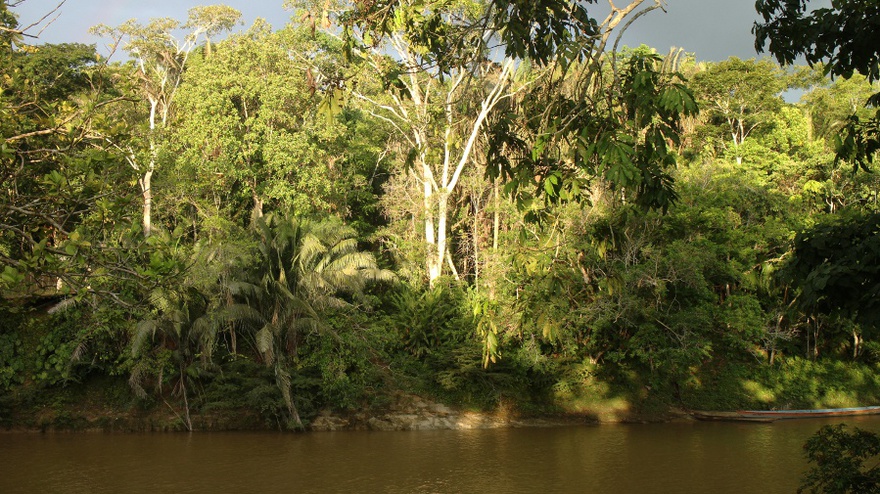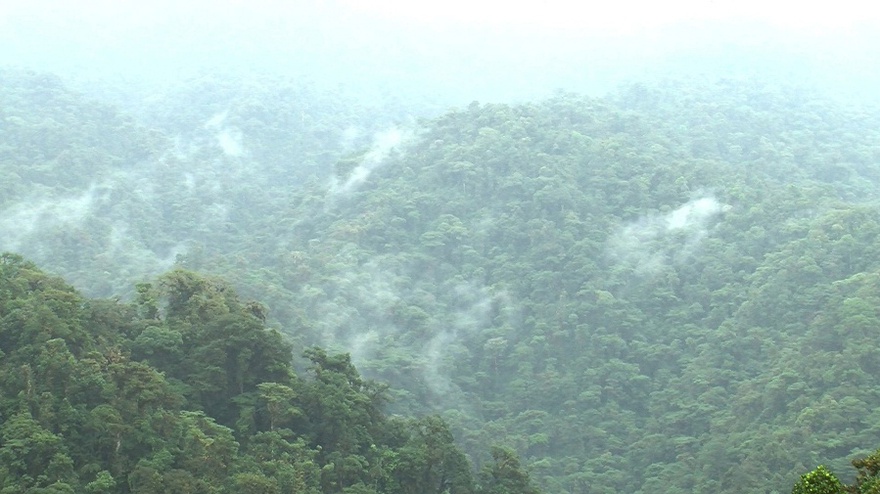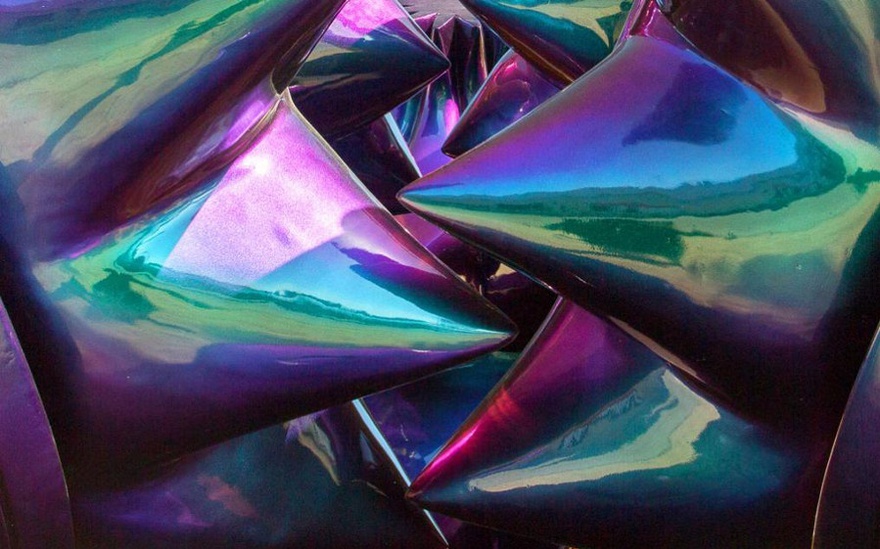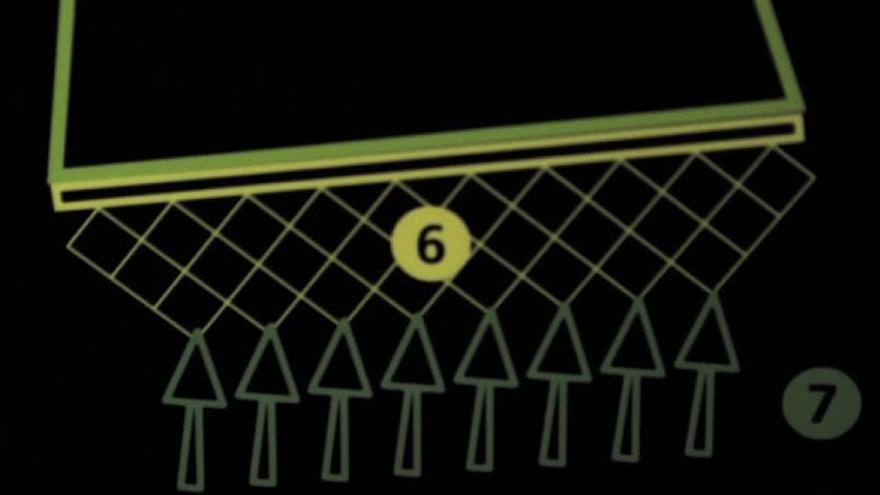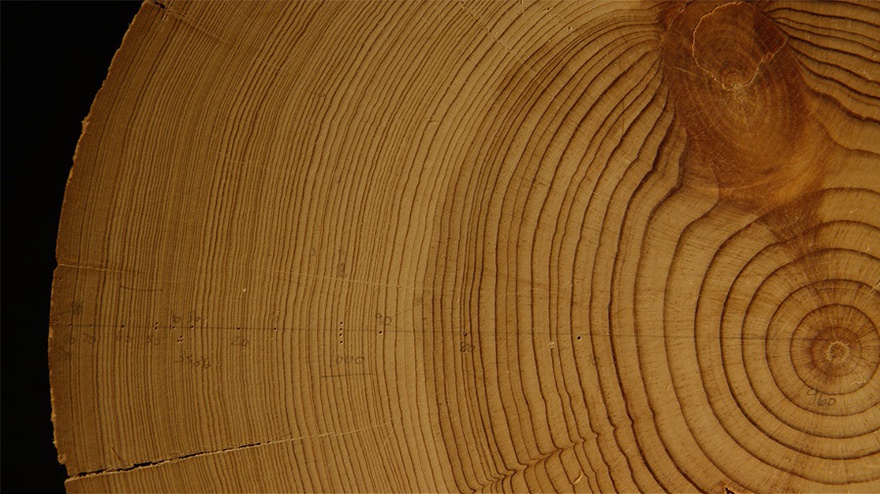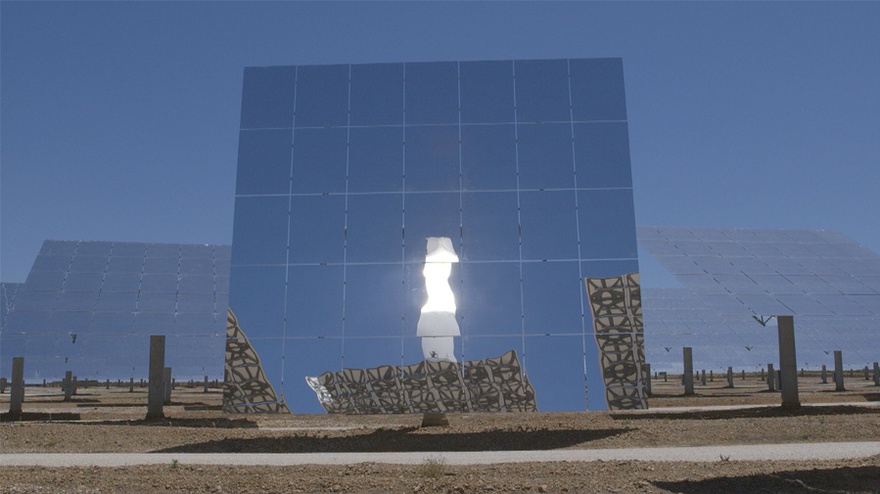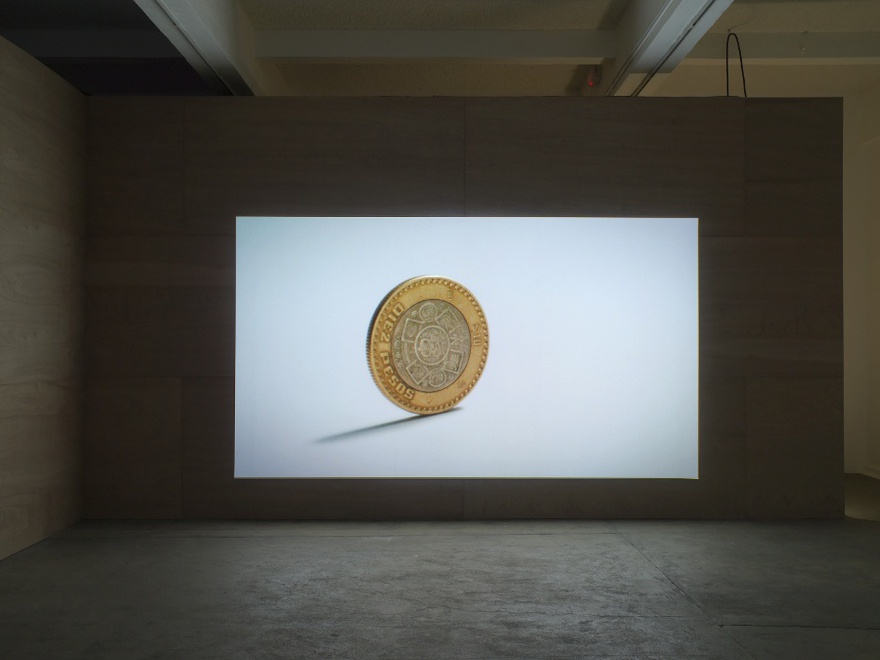Interviews
Art in the Time of the Anthropocene
Nora Razian, Nataša Petrešin Bachelez, and Angela Harutyunyan in conversation, with a contribution from Natasha Gasparian
The project Let's Talk About the Weather: Art and Ecology in a Time of Crisis opens at the Sursock Museum in Beirut on 14 July 2016. Curated by Nataša Petrešin Bachelez and Nora Razian, the project includes an exhibition with works by artists Claire Pentecost, Ursula Biemann, Sophia Al Maria, Marwa Arsanios, Nicholas Mangan, Marko Peljhan, and Jessika Khazrik amongst others; a series of publications; and a public programme. The project aims to re-catalyse debates around ecology and responsibility in a place that recently reappeared in the global media through the so-called 'garbage crises' and the ensuing protests that began in the summer of 2015. The exhibition takes up the term Anthropocene, which has occupied the conceptual and theoretical landscape of the contemporary art world and some scientific communities in the last three years. It is seen as a critical term through which to imagine a new epistemic system where non-Western, non-Modern, non-dualistic, and indigenous cosmologies can flourish and reshape thinking. Curious as to whether the term Anthropocene is a critical concept that both arises from and captures the very historical material conditions of the contemporary world, or whether it is another fleeting art theoretical fashion, Angela Harutyunyan and the curators discuss the conceptual premises and the curatorial strategies of Let's Talk About the Weather.
Angela Harutyunyan: The exhibition Let's Talk About the Weather: Art and Ecology in a Time of Crisis promises to put forth a set of artistic propositions on how to envision different ways of doing and being in the world in the wake of the ecological crises, which have acquired a trans-historical periodizing notion called the Anthropocene. It is rather interesting that the term itself has gained much currency in the art world. How do you position the proposed exhibition within the recent patterns of curatorial and exhibition-making practices that take up the Anthropocene as a critical concept, such as the Taipei Biennale of 2014, the 2015 Istanbul Biennial, the Haus der Kulturen der Welt's Anthropocene project, to name just the most spectacular and large scale examples?
Nora Razian: I think what was lacking in these exhibitions were representations from the region [the Middle East] that would connect to global discourses about ecological crises and climate change. We are not merely taking up the idea of the Anthropocene, but the political and social relationships that inform our present moment. Voices from the region are missing in political discourses and global summits and yet this region, which is heavily influenced by petro-histories and cultures, is being shaped by the effects of climate change. There is no discussion about social, political and economic structures that have brought about this moment so we wanted to broaden the discussion away from merely the impulse to recycle. That was the original premise.
Nataša Petrešin Bachelez: There are artists who have been working on these ideas of political ecology for decades – I don't see this curatorial practice as recent and there is more to it than inscribing it into the discourse of the Anthropocene. Curatorial endeavours in this field have mostly considered how artists in the Global North and Asia have been engaging with ecology. As one of exceptions for the Middle East we should mention the Sharjah Biennial in 2008 or, more largely, Raw Material Company in Dakar which has done several projects on these issues. The situatedness of an exhibition is important for us, but we are also looking at exhibition-making as a practice that adds to our carbon footprint. The exhibition very modestly tries to address these questions, as well as the interrelationships between politics and ecology in the region.
AH: What are the specific ways that the ecological crisis has been made visible in Lebanon and in the region? How has Beirut been functioning as a critical site for intervention in these broader discourses given the current 'garbage crisis' and its response from various groups?
NR: The exhibition is dealing with both issues. Marko Peljhan's work, for example, is looking at the garbage crisis in Beirut, but we are also thinking about it more widely through the idea of environmental racism: how dumping sites are often placed in certain neighbourhoods and how certain political voices might not be taken seriously. As a public space and as an institution, I think that bringing together these ways of looking enriches the debate, but also moves it slightly outside the realm of politics, so that the public is confronted with another way of interacting with these questions. We are looking to examples from other places that have affinities and struggles that might have managed to create change. Apart from the exhibition we will also have a very rich public programme.
AH: The recent 'garbage protests' are largely considered as having failed to push the politicians to act upon months and months of garbage accumulation in the streets of Beirut. But the problem with garbage is only a symptom of broader on-going processes in Lebanon that have accumulated historically and have resulted in rampant and uncontrolled neoliberalism. Why do you think that an exhibition could be an intervention into that space of discourse when the visibility of the protests in the public sphere was not enough to trigger political action?
NPB: It's about the regimes of the visible and the invisible. Aesthetics in a global sense belongs to affecting the regimes of what should be shared, seen, and heard in order for things to change. Museums and art institutions today, in both the Global South and the Global North, feel a stronger urge to connect to what is happening in their immediate environments – they try to see what their constituencies are and what groups they are exchanging with.
NR: Museums and cultural spaces are trying to become, and to think of themselves as, both civic and safe spaces. They can be effective in different ways than the charged public spaces in Beirut. The streets are being claimed and reclaimed all the time. People fall through the cracks and do not identify with the political parties, voices, and movements that are tainted with corruption.
NPB: Our vision for the Sursock Museum is to become an initiative that relates to its visitors, and so we see the public programme of the exhibition as interconnected with exhibition-making. The project hopes to speak and involve the people who live here every day, and to encourage them to think differently about their environment and what they can do. For instance, while Ursula Biemann's work brings up the rights of indigenous people in relation to ecocide, several other artists deal with the sites of toxicity in Lebanon.
AH: So the exhibition itself has an activist premise to intervene in the existing discourses from the space of an art institution that is partially public. Of course, there are conflicting notions of public and private in Lebanon: the public body is being fragmented by the ideology of sectarianism on the one hand, as if it is the real site of political struggle and, on the other hand, by the ideology that the state supposedly does not exist in here. Given the partially public nature of the institution, are you also interested in inviting those officials responsible for ecological disasters in Lebanon to engage with the exhibition and the public programme?
NR: I do not think the Sursock museum is actually a space to engage in those political discussions – it is a bridge into that space. You can engage people and motivate them to have more agency but we are not a stage for politicians. It would politicize the space of discussion and alienate a lot of the people who we want to reach. The exhibition is about self-organization, agency, and proactivity. It is important for the museum's sustainability to know our audiences, but also to stay neutral.
AH: The discourses of the Anthropocene attribute the destruction of the planet and its ecosystem to humanity as such. These discourses assume that humans have gradually embarked upon their own destruction once they discovered fire, the very precondition of human life and labour. This de-historicizes the problem and de-couples it from late capitalism. One of the criticisms of the Anthropocene claims that attributing the disintegration of the planet's ecology to 'humanity' is ideology at its purest in a sense that it attributes the responsibility of such destruction to everyone on the planet when responsibility only lies within a small elitist fraction of humans who own the means of production. This ideology relegates to us, as conscientious individuals, to save the planet by taking individual responsibility for it - by recycling, consuming conscientiously and so on. You also seem to attribute agency and responsibility to the individuals in the curatorial proposition of the exhibition project. What would be your response to this critique?
NPB: My understanding of the Anthropocene is not that it is a product of late capitalism but rather the human greed for colonialist expansionism that created the problem. There is a part of our human civilization that always needs to go beyond one's own frontiers in order to capture and extract, taking nature – as well as the Other – as an immense provider for one's own well-being. If you look at some of the oldest indigenous cultures of the planet you can see that they have survived on almost a zero waste economy and yet are being exterminated as we speak by the current capitalist societies. The critique of anthropocentrism in the Anthropocene should be there in order for us to learn as much and as quickly as possible about how to prevent this from happening again and again. The solutions that are being offered – by the Global North mostly – are geo-engineering and creating more technology in order to clean the atmosphere and get rid of waste. I do not think that there is actually a solution. This is where I think the field of arts has a double-sidedness: it can be considered a safe space where activist artists retreat in order to produce 'improvements of evolutionary code', as Marko Peljhan calls it. It is possible for two enemies to meet in the space of art without war breaking out. They can negotiate. It is a kind of space that still claims to be neutral even though we know that a neutral space cannot exist. The field of artistic production has the privilege to be simultaneously attached and detached.
AH: As cultural workers and curators who are invested in the discourse of the Anthropocene, how can we make sure that the theory lasts? Given the power dynamic between the vast military global industrial complex that exceeds the human dimensions and the small art world that is both part of this complex and is outside of it, aren't the claims of the exhibition to create new epistemologies and ontologies too ambitious? Of course, we are talking about processes that are on a huge planetary scale compared to the small sphere of an exhibition.
NR: I think the exhibition is a space of negotiation. It cannot produce massive changes in the world but maybe it mobilizes on a local, national, or perhaps even on a global level. It builds relationships and affinities and produces knowledges that can then filter into other spaces. It opens up a public conversation with a different exchange of knowledge. It is not about grand gestures but rather what's being mobilized.
NPB: For me it is through situated curating in Donna Haraway's sense of partial perspective, consciously subjective, and always grounded in the current position – not only geopolitical – where one speaks from. It is only through a situated position that one can make a real contribution and not by hopping on planes as we know the businesswomen, tourists, star curators, architects and politicians do.
Our idea is of an ethically situated curating which is accountable and transparent. For example, we will try to trace the materials used for artworks to their origins and calculate the carbon footprint of artists traveling to Beirut. We plan to put this information on the labels of the works. These are very small and symbolic.
AH: People operating in the contemporary art world are well aware that contemporary discourses change fashion seasonally – one day it's relational aesthetics and the next it is aesthetic communities or post-colonial questions and so on and so forth. How can we be sure that the Anthropocene is not another curatorial fashion that will be superseded by another topic that comes up next season?
NPB: I would see it as part of a much larger history. If you want to look into the relationship between nature and the subject within history it has been there since our earliest traces of culture and arts.
AH: Yet the relationship of humans to nature is historically changeable. If we look at classical philosophy, the conception of nature is not how we see it today. It is not conceived simply as an external nature (an ecological environment) but is much broader and much more dialectically positioned. The human both masters nature (because there is no other way to survive and we use it to construct our own environment) yet is enslaved by it. With modernity, nature and culture are being positioned antagonistically. So within this historically mutable relationship between human and nature, how does the exhibition itself act as a space that mediates between nature and the human today?
NR: Ursula Biemann and Paulo Tavares's Forest Law piece deals with this through the intersection of western jurisprudence and the indigenous conception of nature as a living being. The understanding of nature here is as a subject of legal rights. Some artists are also looking at histories of extraction in relation to colonialism and neo-colonialism. Another example is Nicholas Mangan's work that looks at the sun as both a god and a resource of energy in contemporary life.
AH: Could you specify some of the publics that you hope to engage?
NPB: Some of our partners at the moment include the library and the professors at the American University of Beirut (AUB), whose students we would like to get in touch with in order to host some workshops. We are working with organizations such as Cedar Environmental, who work with recycled material; the company The Other Dada, whose social and spatial practices revolve around the Beirut River; as well as a company that will provide solar panels for Nicholas Mangan's work.
AH: What kind of sustainability are you hoping to achieve once this exhibition finishes in October and you are setting up another one? What are the specific approaches to the exhibition, and will they remain or continue?
NR: We have been thinking about how to make our carbon footprint visible as an institution. We will start by establishing a measuring system to think about how much energy we use and how much waste we produce, and eventually this will factor into our decision-making. For this exhibition, we were pushing for things to be made locally with re-used materials wherever possible, and tried to avoid transportation.
AH: Here in Beirut, we live in one of the sunniest places and yet there is an electricity crisis – in terms of concrete procedures what does it take for the Sursock Museum, institutionally speaking, to have solar panels installed? What would you need to do and who would you need to talk to and convince?
NR: We are a small institution, so there are not many layers to go through. We just run our ideas by the board. We did a study about putting solar panels on the roof but for technical reasons, it has not been possible. We hope that by scrutinizing more closely how and when we consume energy and produce waste we will be able to implement changes that will reduce our waste and carbon footprint.
AH: In terms of the procedures of curating and exhibition-making you have a set of themes: stone, earth, sky, water and fire. These function as the conceptual cores for five publications. Were these themes proposed to the artists to engage with or the writers to respond to, or are you also engaging with existing texts?
NPB: The publications were conceived together with Ashkan Sepahvand, who is the series editor. They are all newly commissioned texts by some authors who's works we felt were not translated in the region, as well as by some authors from the region that have been writing on political ecology. We aim to offer a certain type of discourse, vocabulary, and knowledge through translation into Arabic that comes mainly, but not only, from the Anglo-Saxon discourses.
NR: We were thinking about some of the themes that were important in Lebanon and that we felt were missing from critical writing and the art sphere – themes we wanted to question, such as toxicity, toxic dumping, seepage, petro-industries and cultures. Ashkan was interested in bringing in cosmologies, which is the broader question about how one can exist in the world. We briefed only the writers on these ideas for the publication, but not the artists.
AH: And you have five newly commissioned works that respond to your curatorial proposal. Could you talk about some of them?
NR: Yes. We were in conversation with Monira Al Qadiri, following on from previous works that she has done that didn't directly respond to the curatorial proposal. She continues working around the histories of pearl diving and oil extraction in Kuwait.
NPB: We didn't work in the way of sending a narrative and asking for responses to that. It was really based on what we knew of the artists and their interests and how we thought they could be inspired by what is going on here, such as in the case of Claire Pentecost or Marko Peljhan.
NR: It started as a very open discussion that gradually became more and more focused. Jessicka Khazrik has continued her work around the illegal toxic waste trade in Lebanon in the 1980s.
AH: Could you elaborate on the relationship between the public programme and the exhibition? How does one open up the other?
NPB: For us, it was important to say that the public programme is not a parallel programme of the exhibition – both are part of the same project, but they take on different formats. The screenings could have easily been part of the exhibition but we decided to show them as films, partly as a way to invite people to come back and engage with the topics in a continuous way. One of the main aims of museums today is to establish long-term relationships with their publics. Screenings and lectures around texts from the publications are invitations to also revisit the exhibition.
NR: I think some people go to the public programme and then discover there's an exhibition – there's not a sequence for reading the programme.
NPB: The museum has just been opened so it has this potential to experiment with the formats and with its various publics.
NR: I think this is the first exhibition that the Sursock Museum will do where it is not just nailing things to the walls. It's challenging, both technically and culturally, to create this exhibition because there are different generations working in this institution. This is great because we get to have important conversations and watch the institution grow with these challenges.
Let's Talk About the Weather: Art and Ecology in a Time of Crisis opens at the Sursock Museum in Beirut on 14 July until 17 October 2016. Artists include: Marwa Arsanios in collaboration with Samer Frangie, Sammy Baloji, Ursula Biemann and Paulo Tavares, Design Earth, Joana Hadjithomas and Khalil Joreige, Emre Hüner, Jessika Khazrik or The Society of False Witnesses, Adrian Lahoud, Emeric Lhuisset, Nicholas Mangan, Sophia Al Maria, Pedro Neves Marques, Marko Peljhan, Claire Pentecost, Monira Al Qadiri, Marwan Rechmaoui, and Natascha Sadr Haghighian
A special series of publications, edited by Ashkan Sepahvand in collaboration with the exhibition curators, will be produced in conjunction with this exhibition, with contributions from Angela Anderson, Marwa Arsanios, Omar Berrada and Sarah Riggs, Ursula Biemann and Paulo Tavares, Ewen Chardronnet, Adib Dada, Forensic Architecture, Rania Ghosn (Design Earth), Hamza Hamouchene, Razmig Keucheyan, Lara Khaldi, Jessika Khazrik, Kapwani Kiwanga, Adrian Lahoud, Bronwyn Lay, Erica Lee and Zoe Todd, Namik Mačkić, Fadi Mansour, Sophia Al Maria, Achille Mbembe, Angela Melitopoulos, Pedro Neves Marques, Elizabeth Povinelli, Pelin Tan, Françoise Vergès, and Elisabeth von Samsonow.
Angela Harutyunyan is Associate Professor of Art History and Theory at the American University of Beirut. She is editor of ARTMargins, a journal published by MIT Press. Her book titled The Political Aesthetics of the Armenian Avantgarde: The Journey of the 'Painterly Real' is forthcoming with Manchester University Press in 2016.

